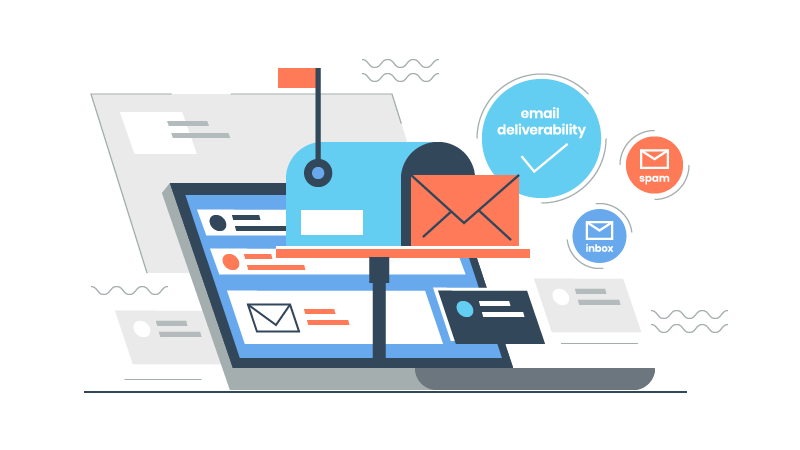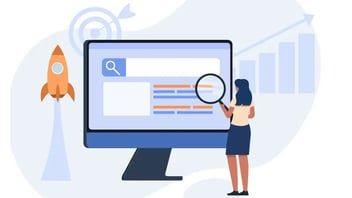Re-engage Inactive Subscribers: Proven Strategies
Did you know that email marketing is one of the most effective marketing channels available today? But this impressive return on investment hinges on one crucial factor: a healthy subscriber list.
Many businesses struggle with inactive subscribers on their email lists, hurting their overall email marketing efforts. The good news: you can fix this! This blog post will show you proven strategies to bring those inactive subscribers back into the fold and get your email marketing humming again.

The Problem of Inactive Subscribers
Imagine a room full of potential customers eagerly awaiting your message. Now, picture a large portion of them simply ignoring your voice. That's the reality with inactive subscribers – those who haven't opened your emails in a while (HubSpot defines them as subscribers with no opens in the last 11 emails). These inactive subscribers become a silent drag on your email marketing efforts.
The impact of inactive subscribers goes beyond just a few unopened emails. They can negatively affect your email deliverability, a fancy term for how likely your emails will land in your subscribers' inboxes.
Inactive subscribers can negatively impact deliverability rates by as much as 60%.
Think of it like this: If recipients aren't engaging with your emails, ESPs (Email Service Providers) like Gmail question their relevance. This can lead to your emails getting filtered and landing in the spam folder. That potential customer you were trying to reach? Gone. But the financial impact is even more profound. Inactive subscribers represent lost opportunities for sales and conversions. By not re-engaging them, you're essentially leaving money on the table.
The good news is that inactive subscribers aren't a lost cause. A successful re-engagement campaign can bring them back into the fold, boosting your engagement metrics like open and click-through rates. This translates to more eyes on your emails, a higher chance of conversions, and increased sales. But the benefits extend beyond just the bottom line. Re-engagement fosters stronger customer relationships. By reaching out and reminding inactive subscribers of the value you offer, you demonstrate that you care about their continued interest. This builds trust and loyalty, setting the stage for long-term customer engagement.
Why Engagement Matters for Inbox Placement
Businesses often send out a crucial message, only to land it in a cluttered junk mail folder. That's the unfortunate reality for emails that fail to reach the primary inbox. Thankfully, ESPs like Gmail use sophisticated algorithms to prioritize which emails deserve that coveted spot. And guess what one of the most significant factors influencing this decision is? Engagement metrics.
Engagement metrics are the lifeblood of successful email marketing. They tell you how your subscribers are interacting with your emails. Here are three key metrics to keep an eye on:
-
Open Rates: This metric reflects the percentage of subscribers who open your emails. A healthy open rate indicates that your subject lines are intriguing and your content is relevant.
-
Click-Through Rates (CTRs): This metric goes beyond opens and measures the percentage of subscribers who click on a link within your email. A high CTR signifies that your content is engaging and leads subscribers towards your desired action.
-
Unsubscribe Rates: While you always want to minimize unsubscribes, they can also be a valuable indicator. A sudden spike in unsubscribes might suggest your content is irrelevant or off-putting.
These metrics and others, like forwards and spam complaints, paint a picture of your overall sender reputation. Think of it as your email marketing report card. High engagement metrics translate to a good grade, indicating that subscribers find your emails valuable. This, in turn, signals to ESPs that your emails are relevant and deserve a prime spot in the inbox.
Re-engaged subscribers can generate up to 90% more revenue than inactive subscribers.
The Google Algorithm
While the exact workings are closely guarded, we know that Google's spam filters rely heavily on engagement metrics. Opens, clicks, forwards, and even unsubscribes all play a role. If your emails consistently generate high engagement, Google is more likely to view them as legitimate and deliver them directly to the inbox. On the other hand, low engagement raises red flags, potentially triggering spam filters and relegating your emails to the junk folder abyss.
Here's where things get interesting. The low engagement of your inactive subscribers can have a ripple effect, impacting the deliverability of your emails to even your most engaged subscribers. Imagine a scenario where a large portion of your list is inactive. This drags down your overall engagement metrics, sending negative signals to ESPs. As a result, even emails you send to your most active subscribers might start getting flagged and filtered out. It's a domino effect – neglecting inactive subscribers can unintentionally harm your communication with your most valuable audience.
Identifying Inactive Subscribers
1. Segmentation
The first step towards re-engagement is pinpointing the inactive subscribers lurking within your list. This is where the power of segmentation comes in. Segmentation involves dividing your email list into smaller groups based on specific criteria. The most relevant criterion for identifying inactive subscribers is engagement. By segmenting your list based on open rates or campaign activity, you can quickly isolate those who haven't interacted with your emails in a while.
2. ESP Tools
The good news is that most ESPs make this process a breeze. They offer built-in features and functionalities that allow you to segment your list based on various engagement metrics. These tools typically enable you to filter subscribers based on factors like:
-
No Opens in a Set Timeframe: You can specify a timeframe (e.g., past three months, past year) and identify subscribers who haven't opened any emails during that period.
-
Low Click-Through Rates: Filtering by low CTRs can help you identify subscribers who open your emails but aren't clicking on your calls to action. This suggests a potential disconnect between your content and their interests.
-
Campaign Engagement: Some ESPs allow you to segment based on engagement with specific campaigns. This helps you isolate subscribers who haven't interacted with a particular campaign you sent, even if they might open others.
3. Define Your Threshold
So, how long is "too long" regarding subscriber inactivity? There's no one-size-fits-all answer. The ideal timeframe for identifying inactive subscribers depends on a few factors:
-
Industry Averages: Different industries have varying email engagement benchmarks. Researching industry averages can give you a baseline for defining inactivity within your niche.
-
Campaign Frequency: If you send emails weekly, a subscriber who hasn't opened anything in the past two months might be considered inactive. However, a four-month timeframe might be more appropriate for a company that sends monthly newsletters.
-
Campaign Goals: Ultimately, your campaign goals play a crucial role. If you aim to drive immediate sales, a shorter timeframe for identifying inactivity might be necessary. For building long-term relationships, you might be willing to wait a bit longer before classifying someone as inactive.
By leveraging segmentation tools and considering these factors, you can clearly define what constitutes an inactive subscriber for your specific email marketing program.
Strategies to Re-engage Inactive Subscribers
1. Craft a Compelling Subject Line
Your subject line is the first impression, the deciding factor between an open and a dreaded delete. For win-back emails targeting inactive subscribers, here are some key considerations:
-
Pique Curiosity: Instead of a bland "We Miss You!" craft a subject line that sparks interest and compels them to open. Ask a question, tease valuable content, or highlight a benefit they might be missing. For example, "Did you miss out on this? (Exclusive offer inside)"
-
Avoid Spam Triggers: Avoid all caps, excessive exclamation points, and words commonly used in spam emails (e.g., "Free!" "Guaranteed!"). These can trigger spam filters and send your email to the junk folder.
-
Personalize When Possible: Adding a touch of personalization can significantly boost open rates. Use subscriber names in the subject line whenever possible. For instance, "Hey [Name], We've Got Something Special for You."
2. Reintroduce Yourself
Consider the win-back email your chance to reconnect with subscribers.
Win-back emails can generate open rates as high as 45% compared to the average marketing email open rate of around 25%.
This email aims to remind inactive subscribers who you are and the value you offer. Here's how to craft an effective win-back email:
-
Acknowledge the Absence: Start by acknowledging the subscriber's inactivity in a friendly and non-accusatory way. For example, "We noticed you haven't been around lately..."
-
Reiterate Your Value Proposition: Remind them why they subscribed in the first place. Highlight your benefits, including exclusive discounts, insightful content, or early access to new products.
-
Offer a Gentle Incentive: A little nudge can go a long way. Consider offering a special discount, a gift with purchase, or access to exclusive content to entice them back into the fold.
-
Make it Easy to Re-engage: Include a clear call to action (CTA) in your win-back email. This could be a button prompting them to "Shop Now," "Read More," or simply "Stay Updated."
3. Offer Exclusive Content/Discounts
People love feeling special. Offering exclusive content, discounts, or early access to new products can be a powerful incentive for re-engagement. Here are some ideas:
-
Curated Content: Based on subscriber interests (if available), send them a curated email with exclusive articles, videos, or webinars they might find valuable.
-
Early Access: Give inactive subscribers a sneak peek at upcoming product launches or exclusive discounts before they're available to the general public.
-
Loyalty Rewards: Consider offering loyalty rewards for re-engagement. These could range from a free product on their next purchase to bonus points in a loyalty program.
4. Segment for More Personalized Outreach
Remember, segmentation isn't just for identifying inactive subscribers. It's also crucial for crafting personalized win-back emails that resonate with individual interests. Here's how:
-
Segment by Past Purchases: Tailor your win-back email based on past purchase history. For example, if a subscriber bought a specific product line, highlight new additions to that category.
-
Segment by Interests: Personalize your win-back email accordingly if your ESP allows segmenting by subscriber interests. For instance, if a subscriber expressed interest in a particular topic, offer them exclusive content related to that area.
5. Focus on Relevancy
Sending relevant content is critical to keeping subscribers engaged, and re-engagement is no exception. Avoid generic emails that could apply to anyone on your list. Instead, personalize your win-back emails by referencing past interactions or segmenting based on subscriber interests. The more relevant your message, the higher the chance of capturing their attention and sparking a renewed interest.
6. Clean Up Your List (The Unsubscribe Option)
Letting go can be challenging, but sometimes it's necessary. Not everyone on your list will be a perfect fit. That's why including a clear and easy-to-find unsubscribe option in your win-back emails is essential. While losing a subscriber might sting, having a clean, engaged list is better than one filled with inactive contacts. Removing truly unengaged subscribers improves your overall sender reputation and ensures your emails reach the people who genuinely want to hear from you.
7. Consider Frequency
Finding the right email-sending frequency is a balancing act. Sending too many email blasts can overwhelm subscribers and lead to unsubscribes. On the other hand, infrequent emails might leave them forgetting who you are. Consider factors like industry norms, your content type, and subscriber preferences when determining the optimal sending frequency.
Advanced Re-engagement Strategies
Beyond the tactics discussed so far, there are even more sophisticated strategies you can employ to maximize your re-engagement efforts:
-
Re-engagement Workflows: Take your win-back efforts further with automated email workflows. These pre-designed sequences send targeted emails over a set timeframe, increasing the chances of reaching inactive subscribers.
-
The Power of Win-Back Series: A single win-back email might not be enough. Consider creating a win-back series with multiple emails spaced out over a few days or weeks. Each email can offer a slightly different incentive or perspective, keeping the re-engagement conversation going.
-
A/B Testing Subject Lines and Content: Don't be afraid to experiment! A/B testing allows you to compare different subject lines and email content versions to see which resonate best with your audience. This data-driven approach helps you optimize your win-back campaigns for maximum impact.
-
Win-Back Landing Pages: Landing pages are dedicated web pages that capture leads or conversions. Create targeted landing pages specifically for your win-back campaigns. These pages should align with the call to action (CTA) in your email and offer a clear value proposition for re-engaging subscribers.
Reignite Your Email Marketing
By implementing these proven strategies, you can effectively re-engage inactive subscribers and breathe new life into your email marketing list. Remember, a healthy list filled with engaged subscribers translates to higher open rates, increased clicks, and more sales and loyal customers. So, don't let those inactive subscribers linger in the shadows. Take action, re-engage them, and watch your email marketing efforts flourish!
Are you still feeling overwhelmed by email trouble? Aspiration Marketing is here to help! Our team can design and execute winning re-engagement campaigns tailored to your needs. Contact us today to learn more and watch your inactive subscribers transform into engaged brand advocates!
This content is also available in:
- Chinese: 重新激活不活跃订阅用户:行之有效的策略









Leave a Comment